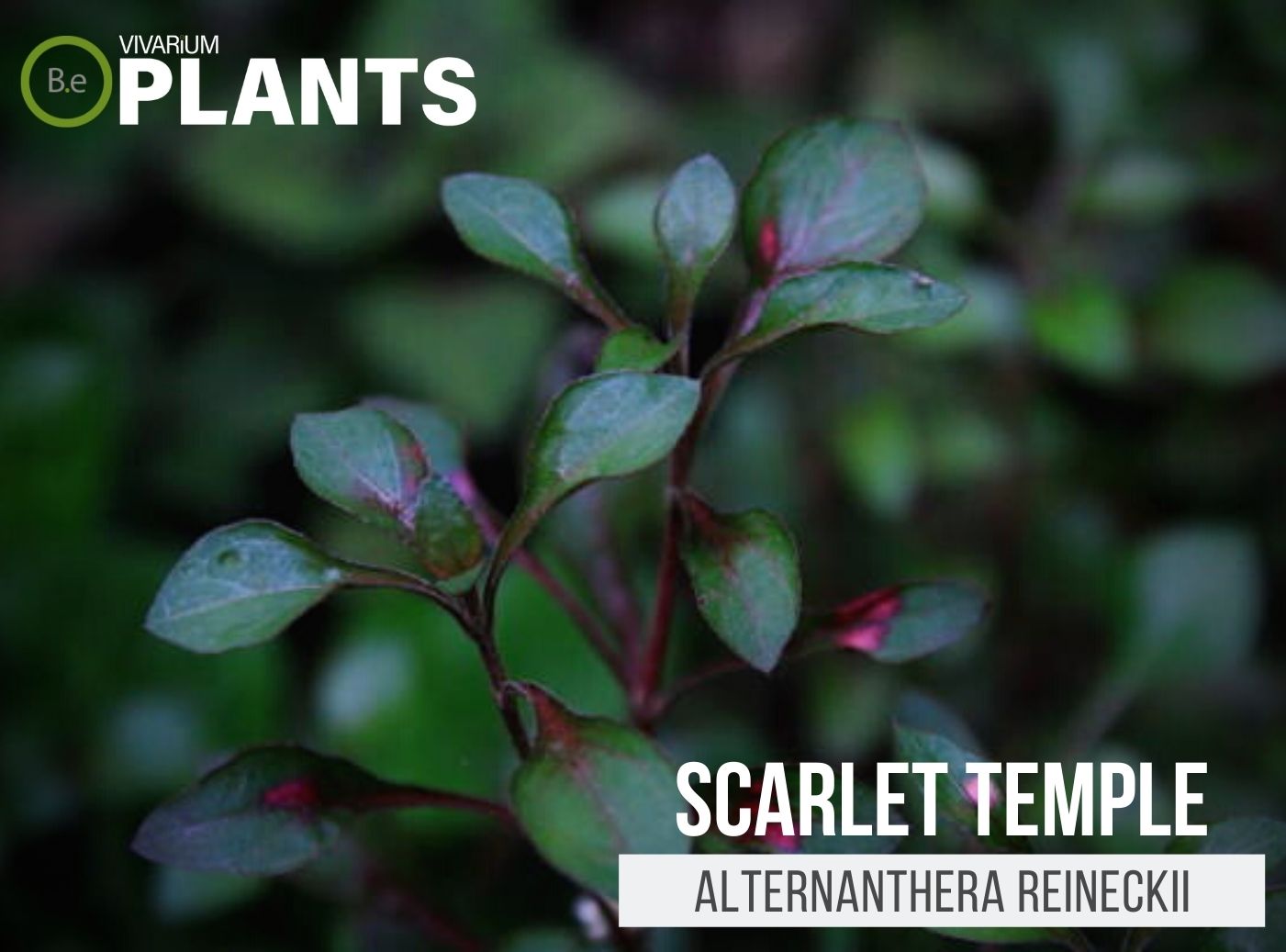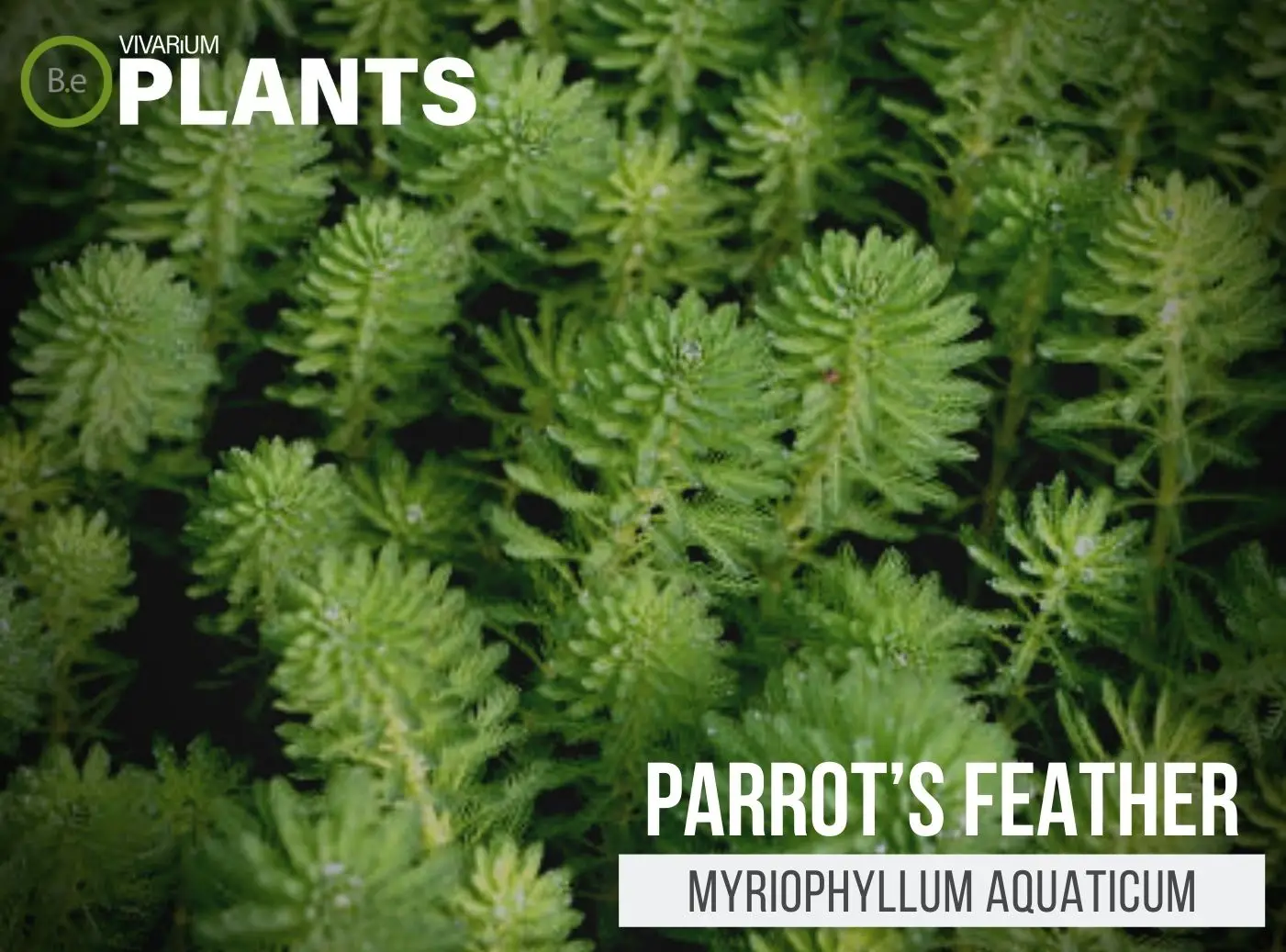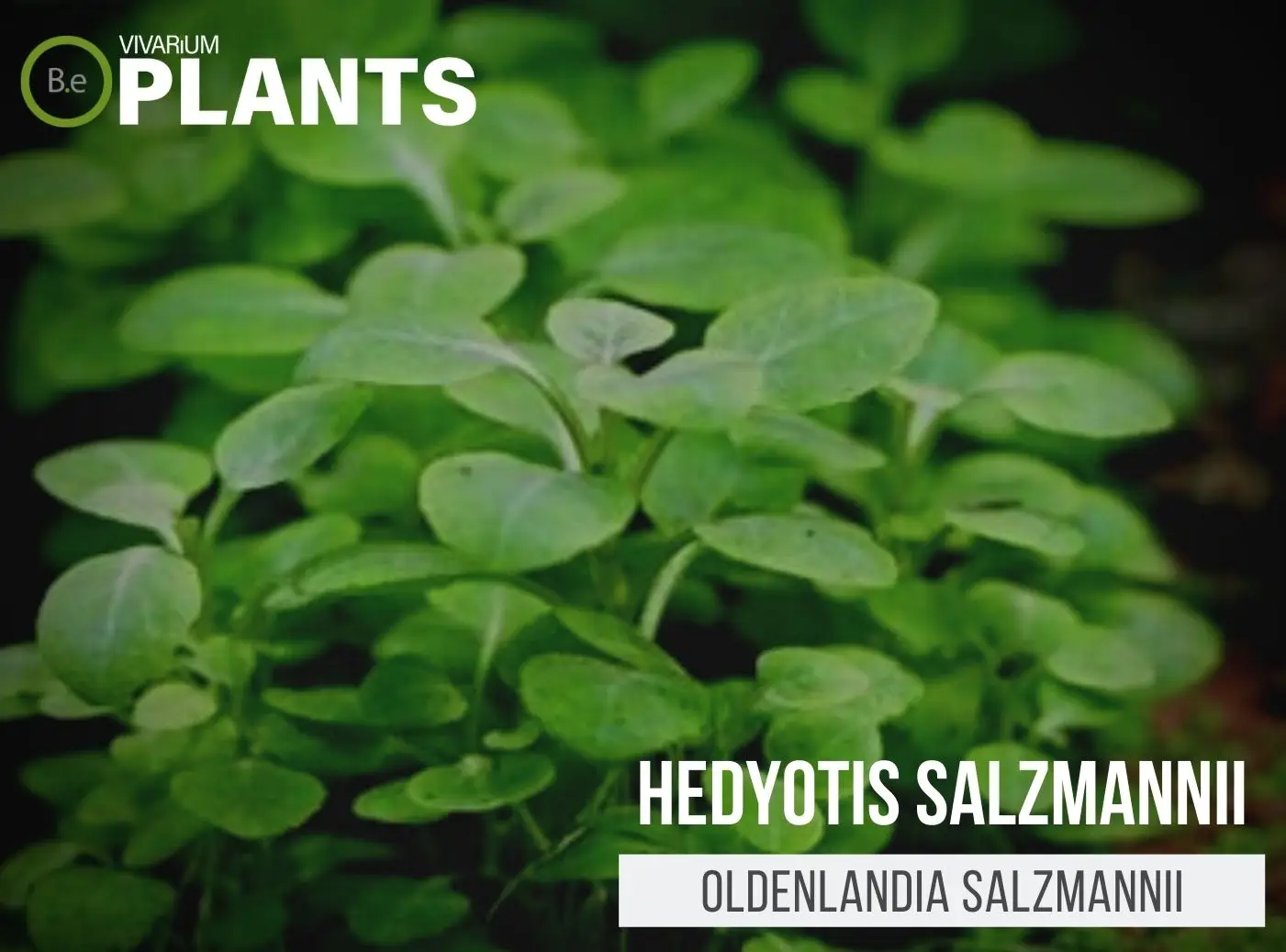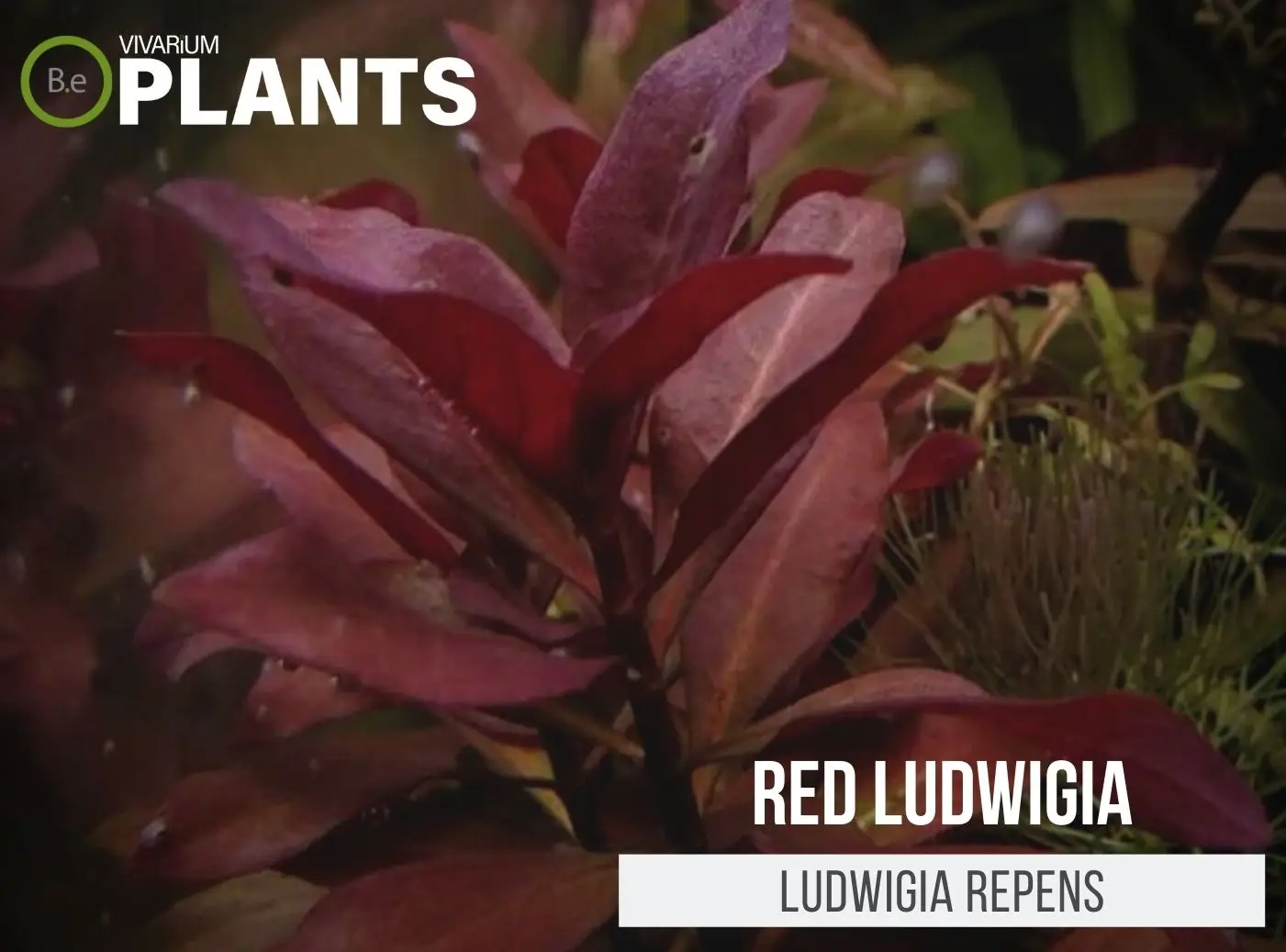Are you looking to add a lush, vibrant look to your aquarium? Aquarium stem plants may be just what you need!
With the right selection of aquarium stem plants, your tank can turn into an eye-catching, exotic paradise.
In this article, you’ll learn about the different types of aquarium stem plants, their benefits, and the best practices for taking care of them.
Whether you’re new to aquariums or an experienced aquarist, you’ll find the perfect stem plants for your tank in no time!
Table Of Contents:
ToggleWhat Are Stem Plants?
Stem plants are aquatic plants that have large, lush stems, a variety of shapes and sizes, and interesting textures.
They’re well suited to be used as both paludarium plants as well as riparium plants.
They are found in a variety of freshwater habitats, including lakes, streams, marshes, and reef environments.


Benefits of Adding Stem Plants to Your Aquarium
Stem plants are popular among aquarium hobbyists because they provide a number of unique benefits commonly used in their natural habitats.
In nature, stem plants help control water nutrients, discourage algae growth, and provide critical habitats and food for native fish and aquatic invertebrates.
In aquascapes, stem plants can be used to create displays that mimic natural environments, as well as incorporate color, texture, and structure into the aquarium.
Naturalize The Aquarium
Stem plants are renowned for their ability to naturalize an aquarium environment, creating a simulation of natural habitat.
As aquarium hobbyists choose more and more varieties of stem plants, the marine life within their aquariums becomes more diverse and healthy.
With their unique shapes and stems, these plants help to add complexity to the aquarium’s environment, creating colorful and lush foliage.
The stem plants also help to create open spaces for the fish to explore and move around.
By carefully selecting the shapes and sizes of stem plants, aquarium hobbyists can create their own natural beauty that will be sure to make their tank shine!
Encourages Beneficial Microbial Activity
Stem plants play an important role in maintaining a healthy microbial balance in the aquarium.
As the leaves of the stem plants break down, they release certain compounds like tannins, phenolics, and humic acids into the tank.
These compounds act as a natural filter, helping to remove impurities and pollutants.
Furthermore, the stems of the plants provide a refuge for beneficial bacteria, which helps break down waste and improve the health of the tank’s inhabitants.
Stem plants can also improve oxygen levels in the tank, allowing fish to live longer and happier.
Useful For Breeding Fish
When it comes to breeding fish in the aquarium, stem plants play an important role.
Many species of fish use the stems of these plants to lay eggs and provide shelter and protection for the fish fry that is hatched.
The plants also add an extra layer of water filtration, as they absorb nitrogen, phosphate, and other toxins that can be harmful to fish eggs, and fry.
The stems provide a good hiding place for the eggs and fry, helping to ensure their survival until they are ready to be released into the aquarium.
Additionally, stem plants act as a natural food source, providing a source of nutrition for the fish fry as they grow.
The Best Stem Plants for Aquariums
When selecting stem plants for an aquarium, paludarium, or riparium, consider the size, color, and light requirements of the plant species.
Many stem plants can be fast-growing, so make sure the aquarium environment has enough nutrients and light for the particular species.
Choose the size and shape of stem plants that will best fit the particular vivarium, and consider using floating plants for shading and oxygenation.
Furthermore, use the list of plants below for any potential compatibility and environmental considerations.
Althernanthera reineckii (Scarlet Temple)
Althernanthera reineckii, commonly known as Scarlet Temple, is a beautiful stem plant from the Amaranthaceae family used often in planted aquariums.
It has a vibrant red-orange hue with reddish-brown stems, filigree-like foliage, and finely pointed tips.
Scarlet Temple is quite tall and can even reach heights of up to 28 inches, making it an excellent background plant in an aquarium.
One of the unique characteristics found in this plant is its oval-shaped leaves which makes it stand out against the more traditional spade-shaped leaves found in stem plants.
Scarlet Temple is easy to care for and requires medium light and moderate fertilization levels.
If maintained properly, the color intensifies and new side shoots form, creating a lush, dense environment.
Here’s a complete guide on caring for the Scarlet Temple (Althernanthera reineckii).
Hygrophila polysperma (Dwarf Hygrophila)
Hygrophila polysperma (Dwarf Hygrophila) is a popular aquarium stem plant that originates from India and Sri Lanka.
It has distinctively fresh green and bright red leaves that are arranged in groups of twos or threes from the stem, and its leaves become greener in higher light situations.
It is a fast-growing, free-floating background plant that does well in lower temperatures (around 71-79 degrees Fahrenheit).
One unique feature of this stem plant is that its shoots can be trimmed to greatly encourage new growth.
When this is done regularly can result in a much denser stem look in the aquarium.
Here’s a complete guide on caring for the Hygrophila polysperma (Dwarf Hygrophila).
Hygrophila corymbosa (Giant Hygrophila)
Hygrophila corymbosa, commonly known as the Giant Hygrophila, is a popular and beautiful stem plant used for aquariums.
This aquatic plant is distinguishable by its bright, rosette-like leaves with vibrant green centers and reddish edges.
It is a fast-growing plant that can reach heights of up to 40 cm, with the potential to spread to the edge of any aquarium.
Its unique trait is its ability to self-propagate; stems will lay horizontally and produce roots, allowing for new plants to grow along the stem.
Giant Hygrophila can create a striking visual display in an aquarium, making them an ideal stem plant for aquatic hobbyists.
Here’s a complete guide on caring for the Hygrophila corymbosa (Giant Hygrophila).
Hygrophila angustifolia (Willow Hygro)
Hygrophila angustifolia (Willow Hygro) is a great stem plant for aquariums.
It is a fast-growing species, with slender, pointy leaves and an upright growth habit.
This plant can reach up to 40 cm in the aquarium and it has an attractive grassy look.
The leaves grow in an attractive light green color that can be enhanced with proper aquarium lighting.
The unique thing about Hygrophila angustifolia as a stem plant is that it can tolerate bright light and grows an amazing root mass, making it an excellent choice for aquariums.
With proper maintenance, Willow Hygro will add color and life to any aquarium.
Here’s a complete guide on caring for the Hygrophila angustifolia (Willow Hygro).
Myriophyllum aquaticum (Parrot’s Feather)
Myriophyllum aquaticum, or Parrot’s Feather, is a type of stem plant used in many aquariums.
It has long and feathery stems with leaves that are generally light green, but can sometimes be dark green or even red depending on water quality and aquarium plant fertilizer used.
One of the unique characteristics of this stem plant is that many of the leaves have a split at the tip.
This gives it the resemblance of a parrot’s feather which is where the plant gets its name.
Myriophyllum aquaticum is very easy to care for, needing just enough light, and regular pruning.
Here’s a complete guide on caring for the Myriophyllum aquaticum (Parrot’s Feather).
Hydrocotyle leucocephala (Brazillian Pennywort)
Hydrocotyle leucocephala, also known as Brazilian Pennywort, is a popular stem plant for aquariums due to its easy growth and low maintenance.
This plant has bright green stems with round, green leaves.
The leaves tend to grow in bunches along the plant stem or create floating “mats” over the aquarium surface.
The single most notable feature of the Brazilian Pennywort is its ability to regenerate and proliferate quickly.
This means that even when clippings are taken from the stem, the stem will continue to grow and the new plants will be able to root near the stem.
This makes it a great choice for a centerpiece in an aquascape.
Here’s a complete guide on caring for the Hydrocotyle leucocephala (Brazilian Pennywort).
Oldenlandia salzmannii (Hedyotis salzmannii)
Oldenlandia salzmannii (Hedyotis salzmannii) is a popular aquatic stem plant that is typically used in aquariums as a groundcover due to its low-maintenance requirements.
It grows thick and lush, forming carpets of small light green leaves above the sand or gravel of the aquarium.
Its unique form includes upright light stems with small oval-shaped leaves running in opposite pairs, which helps it stand out in an aquarium.
Its bright color makes it a particularly attractive addition to a planted tank, while its hardiness and fast growth rate make it an ideal choice for novice aquarists.
It is also unpretentious in terms of lighting, temperature, and substrate; making it low maintenance and easy to care for in aquariums.
Here’s a complete guide on caring for the Oldenlandia salzmannii (Hedyotis salzmannii).
Ludwigia repens (Red Ludwigia)
Ludwigia repens (Red Ludwigia) is a popular stem plant for aquariums that originates from the North American continent.
It has a distinctive vibrant green color coupled with reddish-pink highlights that makes it stand out and adds a beautiful flourish of color to any aquarium.
What sets this stem plant apart is that it can be used both as a submerged or emersed plant very successfully, and can grow even more quickly, when emersed.
It prefers high light and flow and can be pruned frequently to reduce its height, making it an ideal choice for any aquarium setup.
Here’s a complete guide on caring for the Ludwigia repens (Red Ludwigia).
Ludwigia peruensis (Ludwigia Glandulosa)
Ludwigia peruensis, also known as Ludwigia Glandulosa, is a popular stem plant used in aquariums.
It is a fast-growing aquatic plant that has oval-shaped glossy green leaves.
They are unique because the underside of the leaves changes color depending on the color of the light it is exposed to; ranging from white to red.
Growing up to 10 inches tall, Ludwigia peruensis is a great way to add a splash of color to any vivarium and quickly adds some height to the aquarium’s landscape.
Its foliage also houses many microscopic creatures and can be used to provide refuge and shade for smaller aquatic creatures such as shrimp or small fish.
Here’s a complete guide on caring for the Ludwigia peruensis (Ludwigia Glandulosa).
Egeria densa (Anacharis)
Egeria densa, or Anacharis, is an aquatic stem plant typically used to decorate and provide aeration to aquariums.
It is an attractive, widespread freshwater plant with long, narrow leaves and white flowers growing on its stems.
Anacharis can be easily implemented into an aquarium, usually by planting the stems into the substrate.
This plant is known to be hardy in the aquarium environment, making it a popular choice among aquarium owners.
What sets it apart from other stem plants is its ability to reproduce and spread rapidly in the right environment.
Here’s a complete guide on caring for the Anacharis (Egeria densa).
Caring For Aquarium Stem Plants
For best results, aquarium stem plants need adequate light, filtration, and pruning.
Monitor water levels and parameters to ensure a healthy environment and regular pruning to maintain and shape the plants.
With proper care, aquarium stem plants can beautify the tank and provide a healthy environment.
Light Requirements
Light requirements for aquarium stem plants vary depending on the species.
Generally, more light will be needed for shorter plants than for taller ones.
Most stem plants need medium to high lighting for optimal health, particularly those requiring CO2 supplementation.
However, too much light can also lead to the excessive growth of algae in the aquarium.
To enjoy the best of both worlds, keep the light cycle at 8-12 hours per day and supplement with a CO2 system to optimize plant growth and prevent algae from taking over.
Filtration Requirements
Filtration is an essential part of maintaining a healthy aquarium environment, especially when keeping stem plants.
A proper filtration system helps to keep the water quality clear, oxygenated, and free of excess waste and nutrients.
The most common type of filter used in aquariums is a canister filter, which is placed externally and pumps water through a series of filter media.
For optimum water clarity, it’s important to ensure the filter is properly maintained and cleaned on a regular basis.
Furthermore, it’s important to provide the correct levels of water flow for the filter and for the aquarium plants.
With a combination of adequate filtration and the correct water flow, aquarium stem plants can stay healthy and flourish.
Pruning
Pruning is an important step in caring for aquarium stem plants.
As stem plants grow, they may become unruly and begin to lose their attractive shape.
Pruning helps to maintain the desired form and encourages new growth.
Pruning encourages bushier and fuller growth and produces more lateral shoots, making the plants appear more compact and manageable.
It also removes weakened, diseased, and dead stems, as well as any debris in the aquarium.
When pruning, always use a sharp pair of scissors and be sure to not remove too much foliage, as this will stunt the growth of the plants.


Conclusion
With a wide range of aquarium stem plants available, it’s easy to create an impressive underwater landscape.
We’ve discussed the different types of stem plants and what makes them so special.
From light and filtration requirements to pruning, we’ve also gone over the best practices for care and upkeep.
Get creative with your setup and prepare to be amazed at how suddenly your aquarium can transform!
With the right selection of aquarium stem plants, your tank can become a beautiful oasis.
Frequently Asked Questions
1. Soak aquarium plant stems in water for several hours.
2. Place the stems in the substrate of the aquarium, preferably near the bottom.
3. Make sure the stems stay submerged under water.
4. When leaves grow, feed the stems with liquid fertilizer.
5. Change about 25% of the water in the aquarium regularly.
6. Keep the aquarium in a sunny spot to enable photosynthesis.
1. Stem plants add visual interest to an aquarium.
2. Stem plants provide shelter for fish.
3. Stem plants act as a filter, removing toxins from the water.
4. Stem plants help to control algae growth in an aquarium.
5. Stem plants provide oxygen to aquarium water.
Yes, aquarium stem plants typically need aquarium substrate to grow and thrive in an aquarium environment. Substrate allows nutrients and oxygen to be available to the roots of the plants and helps to anchor them into the environment.
Yes, aquarium stem plants can grow roots. Stem plants can either grow with the roots placed in the substrate, or aquarists can use a weighing method that uses rooting tabs to anchor the stems in place without burying the roots.
Yes, stem plants can be floated in an aquarium. Floating stem plants provide shade, reduce algae growth, and create aesthetic appeal. Additionally, stem plants can act as a spawning medium for some aquarium fish.
Stem plants, which are technically known as “plants with stem morphology,” come in three primary varieties. The first is an underground stem, which grows beneath the ground. Aerial stems, as the name suggests, are those that grow above ground and are exposed to the air. Then there’s the subaerial stem, which grows partially above and partially below the ground.










